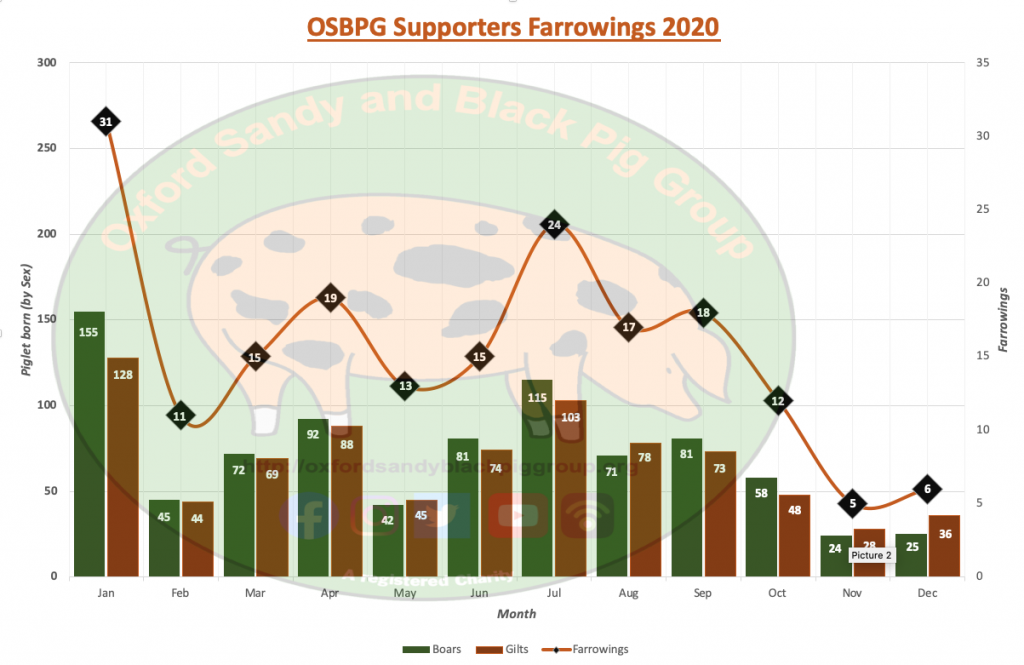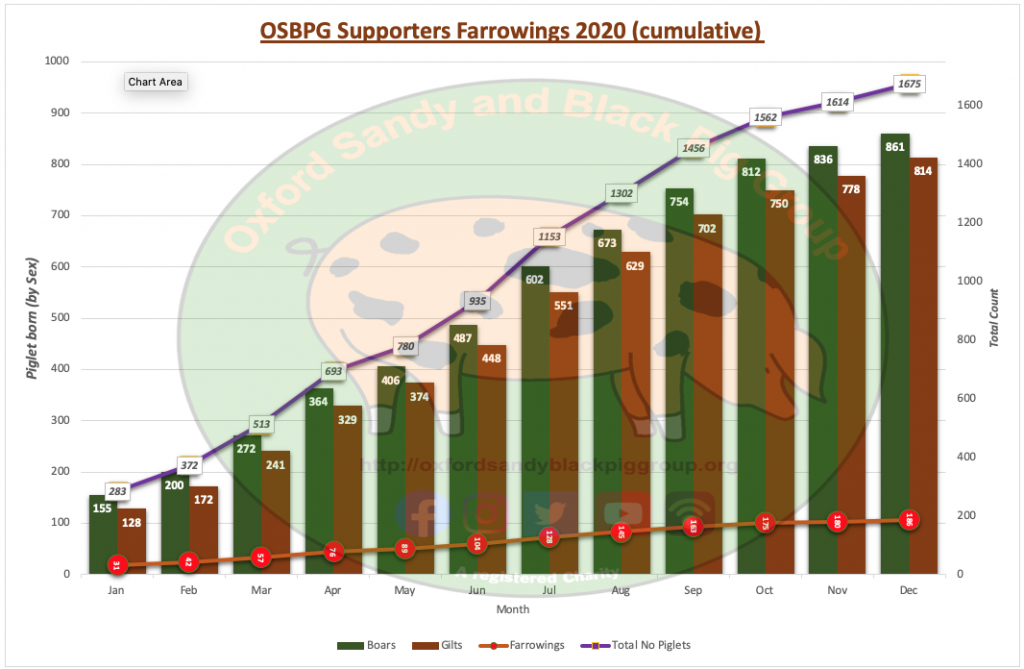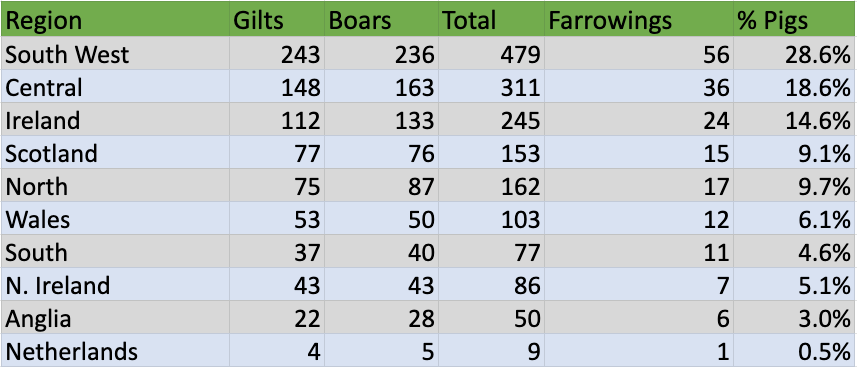Firstly we would like to thank all our supporters who took part in provide to us information on their farrowings throughout 2020. This was initially a study to see if the time of year had any influence on sex of piglets born, whilst the results do not show this, we would need several years data to be able to analyse that kind of question with any chance of being statistically accurate. Instead, we have been using the data to look at the farrowings as a whole, number born, gilts and boars, area and bloodline info where possible.

Over the year we have been able to record 186 farrowings, with 1675 piglets born alive*. 861 (51.4%) were boars and 814 (48.6%) gilts. Our most productive month was January 2020 which accounted for 16.8% of piglets born in 2020. Overall the average litter size was 9, but the most common number in a litter was 10 split 50:50 boars to gilts. The graphs below show the data as a whole, but we have looked and published the data regionally – keep reading for more info on that.
We have gone further and looked at the data on a regional perspective, you can view the data by region with bloodlines on the interactive map at the end of this article. The below table has broken down data by region and sorted in volume;
Whilst this data focuses on birth only and not those that go on to be registered, this is the data we would like to collect over the next 12 months, to give us an idea as a percentage how many are registered, and compare by bloodline. This data will help us better understand genetic spread to better support of GSA program.
Thank you to all our supporters who provided data, we hope this information encourages the continuation of sharing your farrowing data and inspire other to follow. If you have any questions about the data or how you can help please reach out to us via email, the facebook group, Instagram, or twitter.
Finally here is the interactive map providing the data for your region;
Farrowing Interactive Map
*this is a number recorded at birth, and does not account for any loses over the first few days, or reflect those weaned or registered as pedigree.

